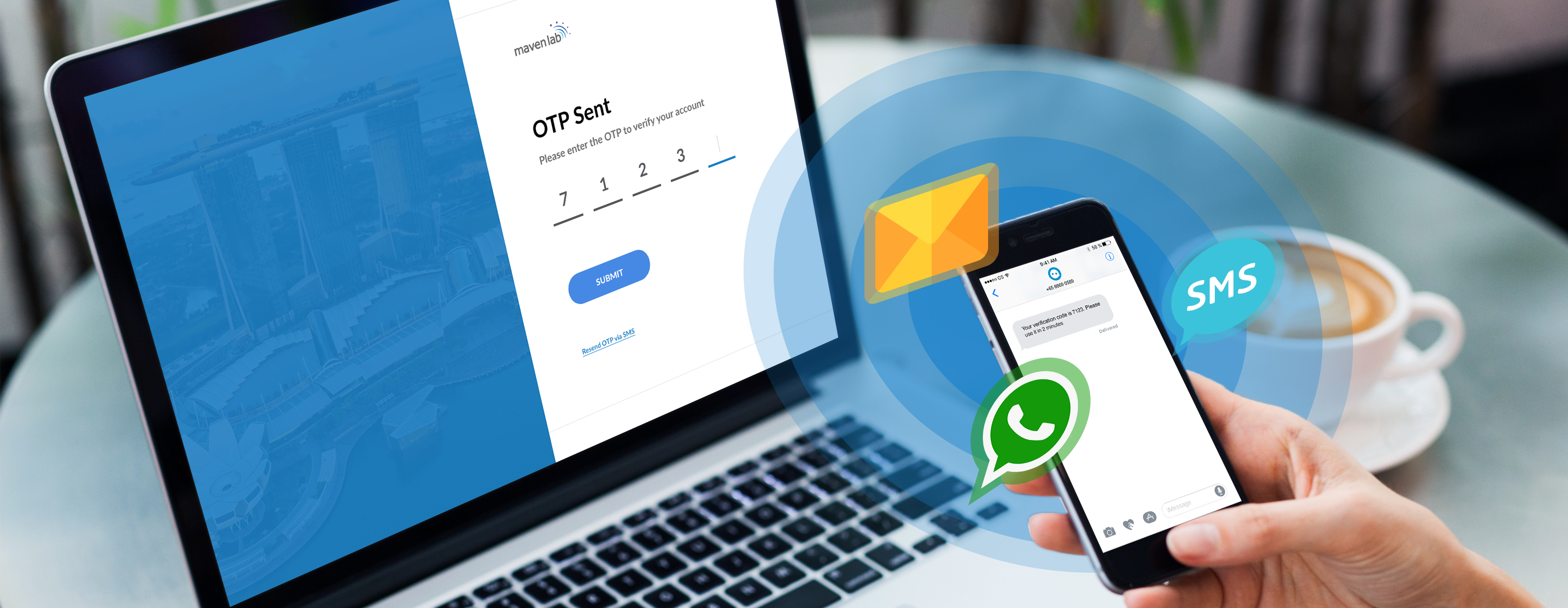
How One-Time Passwords (OTPs) work and why you should use them
28 February 2020
In our world today, current cybersecurity measures just aren’t enough anymore - hackers are getting smarter, and your customers’ safety online can be compromised far too easily. You need to take it a step further and make sure your customers’ data is protected, and we have just the way to get that done.
Introducing one-time passwords (OTPs), one of the simplest yet most effective security solutions out there made just for you. With just a few additional steps to your log-in process, it brings a strong, additional layer of security to protect your customer data, and keeps those with malicious intentions out of your clients’ privacy.
Today, hundreds and thousands of businesses use OTPs to safeguard confidential information and protect their customers. It has become absolutely essential to step up online security measures, and implementing OTPs is the best way to get started.
SMS, WhatsApp and Email OTP
There are a few different variations of OTPs, but we’ll start with the most widely used channel - the SMS OTP.
Your customer logs into their account with their username and password, but right after logging in, they are greeted with a page that requires them to enter a OTP, usually a four to six-digit number. From there, they simply need to enter the relevant OTP on their web page or app, which will then grant them access to the protected page.
The second variety, WhatsApp OTP, works in a similar way. Once the user has entered their username and password, they will be presented with the option to either scan the QR code on the screen, or click the WhatsApp link to launch WhatsApp. An OTP will be automatically generated in the message box, where the user will simply click the send button, which will successfully log them in.
Lastly, with the Email OTP, the user will have the code sent to their email, which they will use in a similar fashion to log in to their account.
Why OTP?
Now, just why should you implement OTPs into your system? Yes, it’s another layer of security, but is it really that effective over the normal login processes?
For starters, it creates an additional layer of security in your login system to further discourage criminals from even trying to hack into an account. With your OTPs constantly changing, it makes it way too difficult for hackers to do anything to your customers’ accounts. All this makes sure that your customers’ sensitive and personal information doesn’t get leaked, maintaining and even increasing your customers’ trust in your company.
According to RiskBased, data breaches exposed 4.1 billion records in the first half of 2019. You need to prevent this, and just by implementing OTPs, you could prevent a significant amount of these losses.
Google’s Gmail, LinkedIn, PayPal and Evernote, amongst others, are all using two-factor authentication, and according to Symantec, 80% of all data breaches could be prevented with two-factor authentication. OTPs have become an essential step towards a safer and more secure online environment, for both you and your customers.
As a whole, OTPs are simple to use and implement, and can do wonders for your business’s security as a whole. Take that step, and you could gain your customers’ invaluable trust in the long run.

